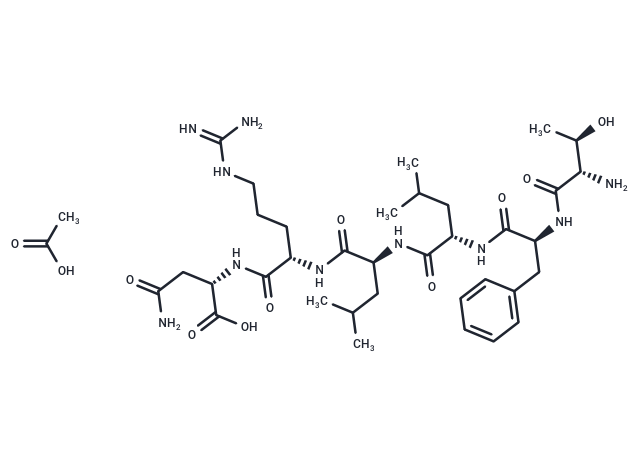Shopping Cart
- Remove All

Your shopping cart is currently empty


| Pack Size | Price | Availability | Quantity |
|---|---|---|---|
| 1 mg | $133 | In Stock | |
| 5 mg | $267 | In Stock | |
| 10 mg | $387 | In Stock | |
| 25 mg | $649 | In Stock | |
| 50 mg | $923 | In Stock | |
| 100 mg | $1,260 | In Stock |
| Description | Protease-Activated Receptor-1, PAR-1 Agonist acetate is a selective proteinase-activated receptor1 (PAR-1) agonist peptide. Protease-Activated Receptor-1, PAR-1 Agonist acetate corresponds to PAR1 tethered ligand and which can selectively mimic theactions of thrombin via this receptor[1][2]. |
| In vitro | Protease-Activated Receptor-1, PAR-1 Agonist acetate induces activation of protein kinase C isoenzymes alpha and epsilon in human HT-29 colon carcinoma cells expressing PAR1 endogeneously. On the cellular level, Protease-Activated Receptor-1, PAR-1 Agonist acetate and thrombin prompted HT-29 cell migration and matrix adhesion by a PKCepsilon-dependent mechanism as concluded because of the inhibition of PAR1-mediated effects by the PKC inhibitor bisindolylmaleimide I and the PKCepsilon translocation inhibitory peptide EAVSLKPT but not by the PKC inhibitor G? 6976[2]. |
| Molecular Weight | 822.95 |
| Formula | C37H62N10O11 |
| Cas No. |
| Storage | keep away from moisture | Powder: -20°C for 3 years | In solvent: -80°C for 1 year | Shipping with blue ice. | |||||||||||||||||||||||||
| Solubility Information | H2O: 20 mg/mL (24.3 mM), Sonication is recommended. | |||||||||||||||||||||||||
Solution Preparation Table | ||||||||||||||||||||||||||
H2O
| ||||||||||||||||||||||||||

Copyright © 2015-2024 TargetMol Chemicals Inc. All Rights Reserved.